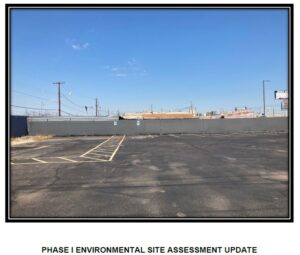When dealing with commercial real estate transactions, one key document that often comes into play is the Phase 1 Environmental Site Assessment (ESA) report. This comprehensive review provides crucial insights into a property’s environmental condition, which can significantly impact a property’s value and usability. This article delves into the Phase 1 Environmental report, breaking down its purpose, components, and importance.
Purpose of a Phase 1 Environmental Report
The Phase 1 Environmental report’s primary purpose is to identify potential or existing environmental contamination liabilities. These assessments are typically conducted for commercial properties but may also apply to residential properties with suspected environmental concerns.
The report is commonly used in real estate transactions to help buyers, lenders, or investors understand the environmental risks associated with a property. It acts as a protective measure, ensuring parties involved are aware of any environmental hazards before completing a transaction.

Phase 1 Environmental Report
Components of a Phase 1 Environmental Report
The Phase 1 Environmental report comprises several key elements, as outlined by the American Society for Testing and Materials (ASTM) standards.
- Site Inspection: This involves a thorough inspection of the property and surrounding areas to identify potential environmental concerns, such as signs of hazardous substances or petroleum products.
- Historical Review: This section delves into past property usage, reviewing historical records, aerial photographs, building permits, and more to identify any activities that may have led to environmental contamination.
- Regulatory Records Review: The assessor will check federal, state, and local regulatory databases for records of environmental issues related to the property or nearby sites.
- Interviews: The assessor may speak with current and past property owners, occupants, neighbors, or local government officials to gather more information.
- Report: After the assessment, the environmental professional will compile a detailed report outlining the findings, known as the Phase 1 Environmental report.
Keywords: American Society for Testing and Materials, site inspection, historical review, regulatory records review, interviews, environmental professional.
Importance of a Phase 1 Environmental Report
The Phase 1 Environmental report plays a crucial role in real estate transactions. Here’s why it’s essential:
- Risk Management: By identifying potential environmental issues, a Phase 1 ESA helps manage risk by informing decision-making processes during property transactions.
- Compliance: A Phase 1 ESA can demonstrate compliance with environmental regulations, potentially shielding property buyers from liability for contamination discovered after purchase under the Comprehensive Environmental Response, Compensation, and Liability Act (CERCLA) in the US.
- Preserving Property Value: If environmental concerns are identified early, remediation can take place to maintain or restore the property’s value.
- Investor Confidence: A clean Phase 1 Environmental report can enhance investor confidence, knowing that the property doesn’t pose significant environmental risks.
Keywords: Risk management, compliance, Comprehensive Environmental Response, Compensation, and Liability Act, preserving property value, investor confidence.
In conclusion, a Phase 1 Environmental report is an invaluable tool in real estate transactions, providing essential insight into a property’s environmental status. Through this comprehensive assessment, potential buyers, investors, and lenders can make informed decisions, mitigate risk, and ensure compliance with environmental regulations.
Remember that while the Phase 1 Environmental report is a powerful tool, it only provides a historical overview of potential environmental concerns. If issues are found, a more detailed Phase 2 Environmental Site Assessment may be needed to confirm the presence of contaminants. Therefore, it’s essential to involve environmental professionals and legal advisors when dealing with properties with potential environmental concerns.
Keywords: Phase 1 Environmental report, environmental contamination liabilities, real estate transactions, environmental risks.
About the Author
Bryan Watkins is a Principal and co-owner of LRA Real Estate Group LLC, located in Mesa AZ. He is a ‘hunter-gatherer’ of wise advice, smart advisors and savvy clients. Search available LRA commercial listings today. You can reach Bryan at: bryan@LRAphx.com or 480.734.7878.

